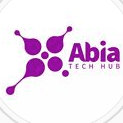Exploring the Role of Full-Stack Web Development in Modern Digital Solutions
In today's fast-paced digital landscape, creating robust and efficient web applications is crucial for businesses and organizations. Full-stack web development plays a vital role in meeting these demands by providing end-to-end solutions. In this blog post, we will dive into the world of full-stack web development, exploring its significance, benefits, and the technologies involved.
1. Understanding Full-Stack Web Development
Full-stack web development refers to developing both the front-end (client-side) and back-end (server-side) components of a web application. Full-stack developer possesses a broad skill set that enables them to handle various aspects of web development, including user interface design, database management, server configuration, and system architecture.
2. The Advantages of Full-Stack Development
One of the primary benefits of full-stack web development is the ability to have a single developer handle all aspects of a project. This leads to increased efficiency, streamlined communication, and faster development cycles. Full-stack developers possess a comprehensive understanding of the entire web development process, allowing them to bridge the gap between different layers of an application seamlessly.
3. Exploring Front-End and Back-End Technologies
Front-end technologies such as HTML, CSS, and JavaScript are essential for creating visually appealing and interactive user interfaces. These technologies enable full-stack developers to craft intuitive and engaging experiences for website visitors. On the other hand, back-end technologies like server-side frameworks, databases, and APIs handle data management, server-side logic, and integration with external services.
4. Building Scalable and Responsive Web Applications
Full-stack developers excel at building web applications that are scalable and responsive across different devices and screen sizes. They employ techniques like responsive design, which ensures that websites adapt and provide optimal user experiences regardless of the device being used. Full-stack developers also implement strategies to optimize performance, such as caching, code optimization, and efficient database queries. These practices contribute to faster loading times, improved user satisfaction, and better search engine rankings.
5. Full-Stack Frameworks and Tools
Various full-stack frameworks have gained popularity in the web development community. Some notable examples include the MEAN stack (MongoDB, Express.js, AngularJS, and Node.js), the MERN stack (MongoDB, Express.js, React, and Node.js), and Django (a Python-based framework). These frameworks provide a solid foundation for building full-stack web applications by offering pre-defined structures, libraries, and tools.
Additionally, full-stack developers utilize a range of development tools such as integrated development environments (IDEs), code editors, version control systems, and project management platforms. These tools aid in enhancing productivity, collaboration, and code quality throughout the development process.
6. Real-World Examples
To illustrate the impact of full-stack web development, let's explore a couple of real-world examples. Imagine an e-commerce platform that seamlessly integrates a visually appealing front-end user interface with a robust back-end infrastructure for inventory management, order processing, and payment integration. A full-stack developer would be instrumental in designing and implementing such a system.
Another example could be a content management system (CMS) that allows users to create, edit, and publish content. A full-stack developer would handle both the front-end components responsible for user interaction and the back-end components for content storage, retrieval, and management.
7. Career Opportunities and Growth in Full-Stack Development
With the increasing demand for versatile web developers, pursuing a career in full-stack development offers promising opportunities. Companies often seek full-stack developers who can handle multiple aspects of web development, making them precious assets. To excel in this field, aspiring full-stack developers should focus on acquiring a broad range of technical skills, staying updated with industry trends, and continuously improving their problem-solving abilities.
Conclusion
Full-stack web development is vital in modern digital solutions, enabling developers to create efficient, scalable, and feature-rich web applications. With their ability to handle both front-end and back-end aspects of development, full-stack developers are well-equipped to deliver end-to-end solutions. By embracing the challenges and opportunities of full-stack web development, professionals in this field can shape the future of the digital landscape.
AbiaTech Hub has an Academy dedicated to teaching tech skills like Full-Stack Web Development, go to https://academy.abiatechhub.com/ to check us out




